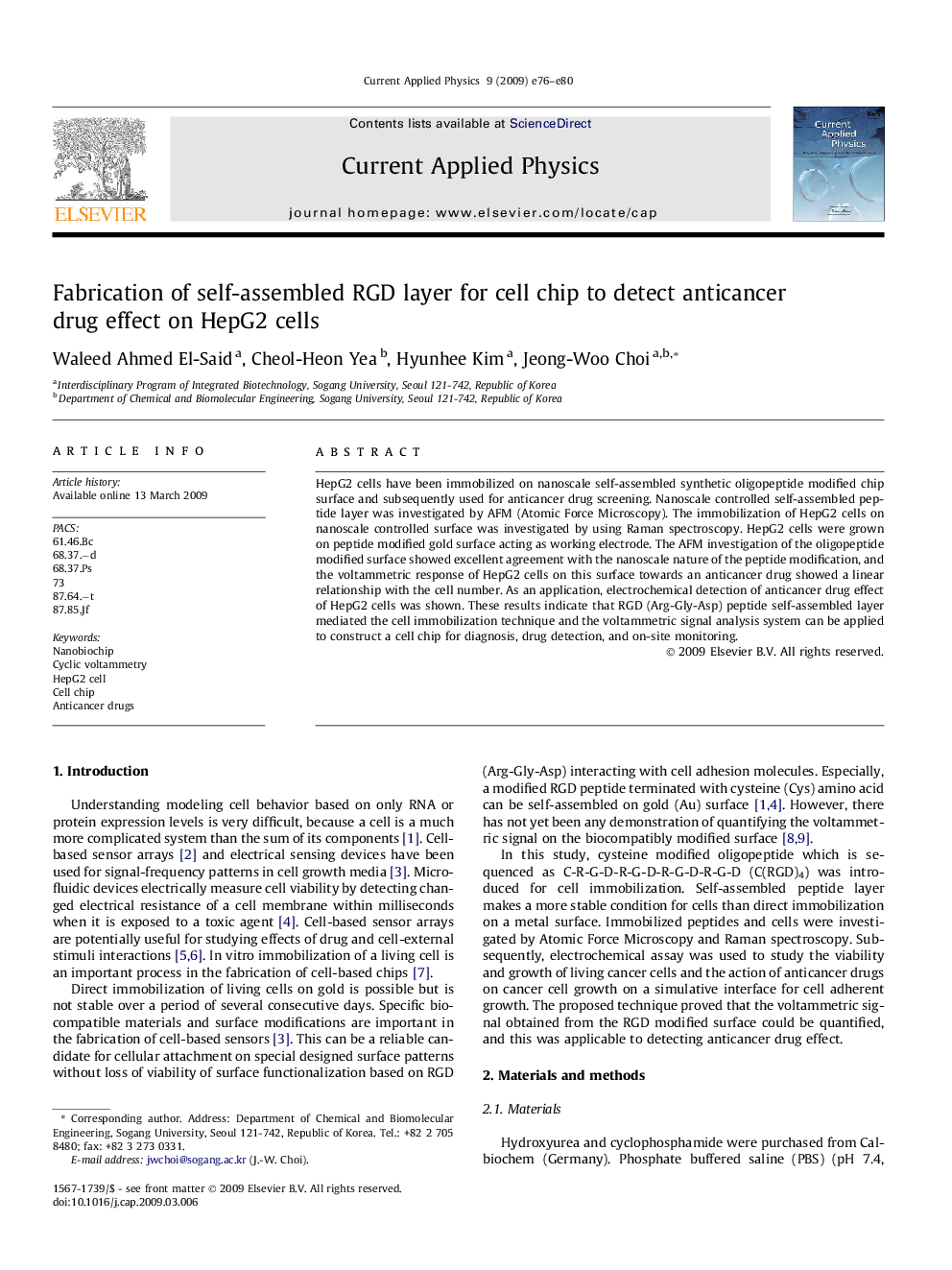| Article ID | Journal | Published Year | Pages | File Type |
|---|---|---|---|---|
| 1789272 | Current Applied Physics | 2009 | 5 Pages |
HepG2 cells have been immobilized on nanoscale self-assembled synthetic oligopeptide modified chip surface and subsequently used for anticancer drug screening. Nanoscale controlled self-assembled peptide layer was investigated by AFM (Atomic Force Microscopy). The immobilization of HepG2 cells on nanoscale controlled surface was investigated by using Raman spectroscopy. HepG2 cells were grown on peptide modified gold surface acting as working electrode. The AFM investigation of the oligopeptide modified surface showed excellent agreement with the nanoscale nature of the peptide modification, and the voltammetric response of HepG2 cells on this surface towards an anticancer drug showed a linear relationship with the cell number. As an application, electrochemical detection of anticancer drug effect of HepG2 cells was shown. These results indicate that RGD (Arg-Gly-Asp) peptide self-assembled layer mediated the cell immobilization technique and the voltammetric signal analysis system can be applied to construct a cell chip for diagnosis, drug detection, and on-site monitoring.
